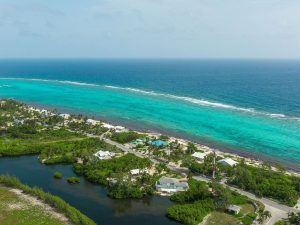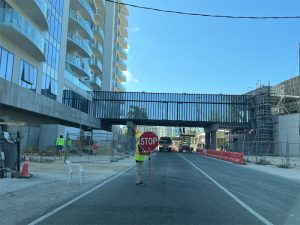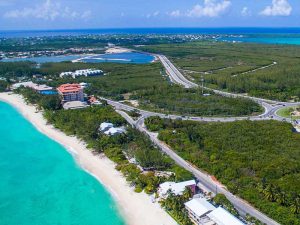Home » Information » Historical Overview
Historical Background
The Cayman Islands are a British Overseas Territory. The islands are self-governed but are under the direct protection of the United Kingdom; and the Queen of England is depicted on Cayman Islands currency and postal stamps.
The people here speak English, although there are many other languages spoken by its inhabitants. Christopher Columbus first sighted Cayman Brac and Little Cayman on 10 May 1503 during his fourth trip to the New World. Columbus was en route to Hispaniola when his ship was thrust westward toward “two very small and low islands, full of tortoises, as was all the sea all about, insomuch that they looked like little rocks, for which reason these islands were called Las Tortugas.” Grand Cayman soon became an important port of call for seafarers to restock on fresh meat, water and the silver thatch palm used for rope making.
One of the favourite meat sources of these early visitors was the caiman, a small crocodilian creature that inhabited the mangroves and from which Cayman was renamed. Unfortunately, an early taste for these reptiles was so great that they were hunted to extinction. There are no caimans, crocodiles or alligators here now. Although in 2007 a large crocodile was caught in the mangroves, the mystery of where it had come from has never been solved.
Can’t find the information you are looking for, use the
Cayman Islands GPT
Related Topics
Captain Blackbeard and Calico Jack
The early seafarers carried valuable cargoes and pirates were soon drawn to the islands. Two of the most notorious pirates, Captain Blackbeard and Calico Jack, remain intricately linked with modern Cayman – as trade names and some of the smaller streets have distinctly pirate-sounding names. To this day there are tales of buried pirate treasure in the interior of Grand Cayman and in the caves of Cayman Brac. Spanish bullion has certainly been recovered from the seabed and you can buy coins from specialist stores in George Town. The Cayman Islands welcome would-be pirates each year for a week of fun and festivities in the annual Pirates Week Festival held in November.
Cayman Agriculture
There is a myth that there is no agriculture here, and this is misguided. The flora on the island does need to fight for survival; and coconuts, mangoes, papayas, guava, ackee, jack fruit, avocados, June plums, bread fruit, yam, sugar cane, bananas, plantains and sea grapes all thrive here. There is also an abundance of mangroves that play a vital role in the ecosystem of the islands – and the world. A variety of livestock is raised on the island including chickens, cattle, goats and pigs. The Turtle Farm, now called The Turtle Centre, fulfills the local desire for turtle meat and the seas are home to healthy stocks of fish, lobster and conch; contact the Department of the Environment (DOE) for further details on fishing laws.
“Funny Money”
Ask people what they know about the Cayman Islands and most of them will mention its reputation for ‘funny money’. There are untold millions in the banking systems of the Cayman Islands but, like piracy, any untoward dealings are very much in the past. However, it is interesting to note that Grand Cayman is currently rated as the worlds’ sixth largest financial centre and it is currently home to more than three hundred banks. With a resident population in the region of just 60,000, this is quite staggering.
Despite the enormous wealth and the high standard of living enjoyed by most of its inhabitants, it is misguided to presume that there is no poverty in Cayman. Many families, local and expatriate, struggle to cover the basic cost of living here – which is high. In this proud nation you are unlikely to see the blatant needs of humanity on the streets of Cayman; children are fed, clothed and attend school, and you are very unlikely to encounter a beggar. There are a number of charities and government bodies dedicated to lessening this burden. Many people are still recovering from Hurricane Ivan, which hit the island hard in 2004 leaving many people homeless and their worldly possessions destroyed.
Grand Cayman Intro
Grand Cayman is famous for its Seven Mile Beach. But this is a misnomer – there is an expanse of white sand being lapped by azure waters, but not seven miles of it. The beach is closer to six miles than seven, but ‘almost six mile beach’ doesn’t have quite the same allure. Regardless of the actual length, it is a beautiful beach that stretches from just outside George Town almost to the tip of the island in West Bay. It is this pristine beach that is the most visible sight to greet cruise ship passengers as they come in to George Town in the early mornings.
Grand Cayman island, the largest and most cosmopolitan of the three Cayman Islands, is about 22 miles long with an average width of four miles. George Town, the capital, is on the western shore of Grand Cayman. The wide diversity found in Grand Cayman is a blend of rich local tradition with international influences resulting in a truly unique atmosphere.
From the crystal blue water and powder-white sand of Seven Mile Beach and the shopping and financial hubbub of George Town, to the quiet, undeveloped expanses of East End, Grand Cayman offers something for everyone. Dive, snorkel or simply splash in the warm, crystal-clear waters that are the islands’ hallmark. Considering the size of the island, Grand Cayman provides a dizzying array of activities to sustain a huge range of interests. Whether you’re looking for the adventure of a lifetime or just a few days of respite, Grand Cayman is the quintessential “place to be.”






